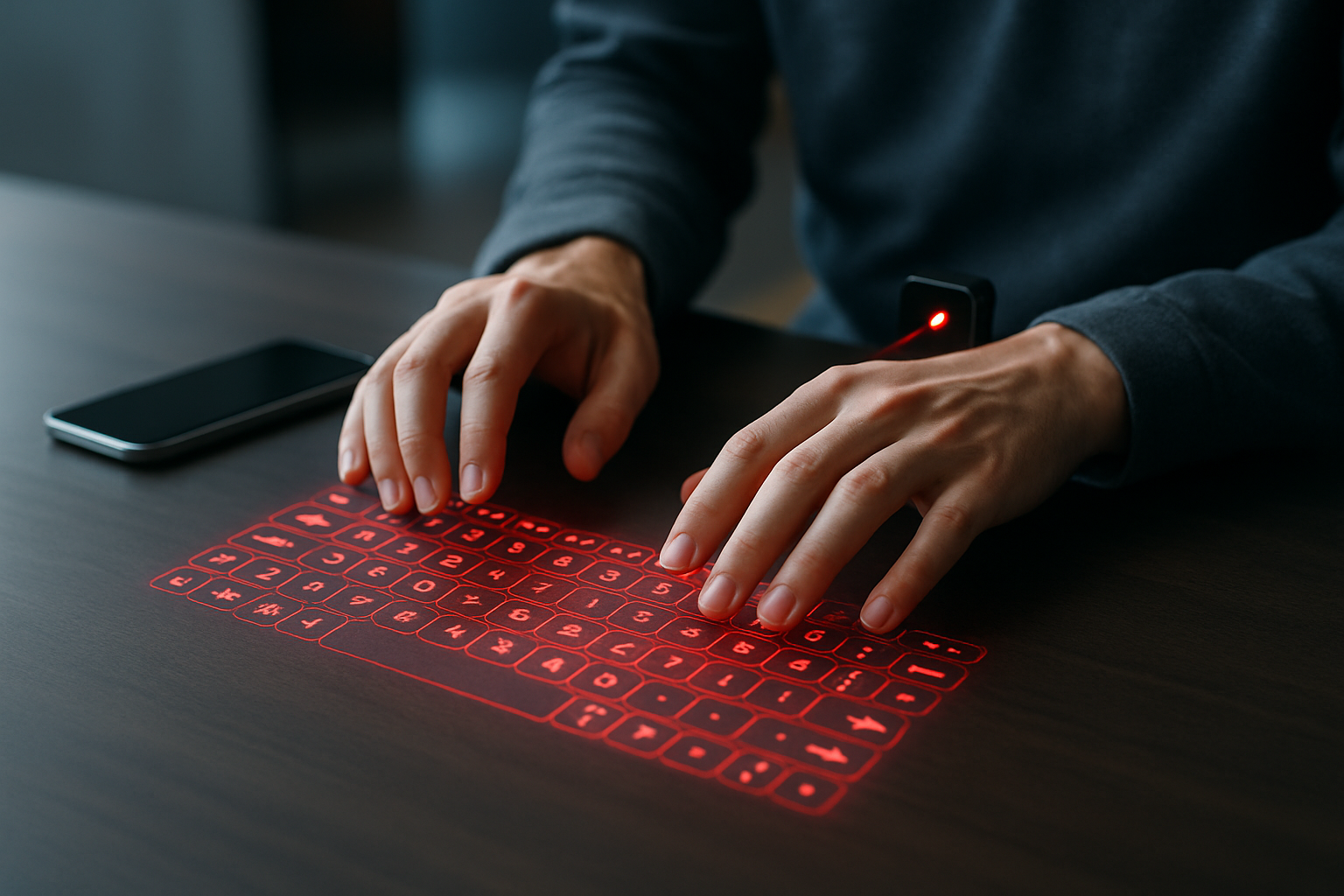Holographic Keyboards: The Future of Typing?
In a world where technology continues to shrink and streamline our devices, the humble keyboard has remained largely unchanged. But what if you could type on thin air? Enter holographic keyboards, a futuristic input method that's been dancing on the edge of reality for years. Now, as advancements in projection technology and gesture recognition push forward, these ethereal interfaces are inching closer to mainstream adoption.

The Science Behind the Spectacle
At its core, a holographic keyboard uses a combination of projection technology and motion sensors to create the illusion of a physical keyboard. A small projector casts an image of a keyboard onto a flat surface, while infrared sensors detect the movement of your fingers. When you “press” a key, the system interprets your gesture and translates it into a keystroke.
The technology relies heavily on advanced algorithms that can distinguish between intentional key presses and accidental movements. This is crucial for accuracy and usability, as false inputs could quickly render the system frustrating and impractical.
A Brief History of Virtual Typing
The concept of virtual keyboards isn’t new. The first patents for projection-based keyboards date back to the early 1990s. However, it wasn’t until the early 2000s that we saw the first commercially available products. These early attempts were bulky, inaccurate, and far from practical for everyday use.
Fast forward to today, and the technology has made significant strides. Modern holographic keyboards boast improved projection quality, more accurate motion tracking, and even haptic feedback systems that simulate the feel of pressing physical keys.
Potential Applications and Market Impact
The appeal of holographic keyboards lies in their potential to free up physical space and offer a more flexible typing experience. In a world where mobile devices are getting larger screens but sacrificing physical keyboards, a projected interface could offer the best of both worlds.
Some potential applications include:
-
Portable computing: Imagine carrying a full-sized keyboard in your pocket, ready to use with any flat surface.
-
Clean environments: In hospitals or laboratories where sanitization is crucial, a touch-free keyboard could reduce the spread of germs.
-
Augmented reality integration: As AR technology advances, holographic keyboards could become a natural interface for interacting with virtual objects.
Market analysts predict that the global holographic display market, which includes keyboard technology, could reach $5.4 billion by 2024. However, widespread adoption will depend on overcoming several key challenges.
Challenges and Limitations
While the concept of holographic keyboards is undeniably cool, there are several hurdles to overcome before they become a practical alternative to physical keyboards:
-
Tactile feedback: The lack of physical keys can make typing less accurate and more tiring over long periods.
-
Lighting conditions: Bright environments can interfere with the projection and motion tracking.
-
Surface dependency: The need for a flat, uniform surface limits where these keyboards can be used effectively.
-
Battery life: The power requirements for projection and motion tracking can drain mobile devices quickly.
The Road Ahead: Innovations and Improvements
Despite these challenges, researchers and companies continue to push the technology forward. Recent innovations include:
-
Improved haptic feedback systems that use ultrasound waves to create the sensation of pressing keys.
-
AI-powered prediction algorithms that can anticipate and correct typing errors in real-time.
-
Multi-surface projection capabilities that allow typing on curved or uneven surfaces.
-
Integration with eye-tracking technology for even more precise input detection.
As these advancements continue, we may see holographic keyboards move from novelty to necessity in certain applications. However, it’s unlikely they’ll completely replace physical keyboards in the near future.
A Glimpse into Tomorrow’s Typing
Holographic keyboards represent a fascinating intersection of cutting-edge technology and everyday utility. While they may not be ready to replace your trusty mechanical keyboard just yet, they offer a tantalizing glimpse into the future of human-computer interaction.
As we continue to push the boundaries of what’s possible in technology, innovations like holographic keyboards remind us that the way we interact with our devices is far from set in stone. Whether they become the next big thing or remain a niche technology, holographic keyboards are sure to leave their mark on the evolution of user interfaces.
In a world where the line between physical and digital continues to blur, holographic keyboards stand as a shimmering example of what’s possible when we dare to reimagine the tools we use every day. The future of typing might just be written in light.





